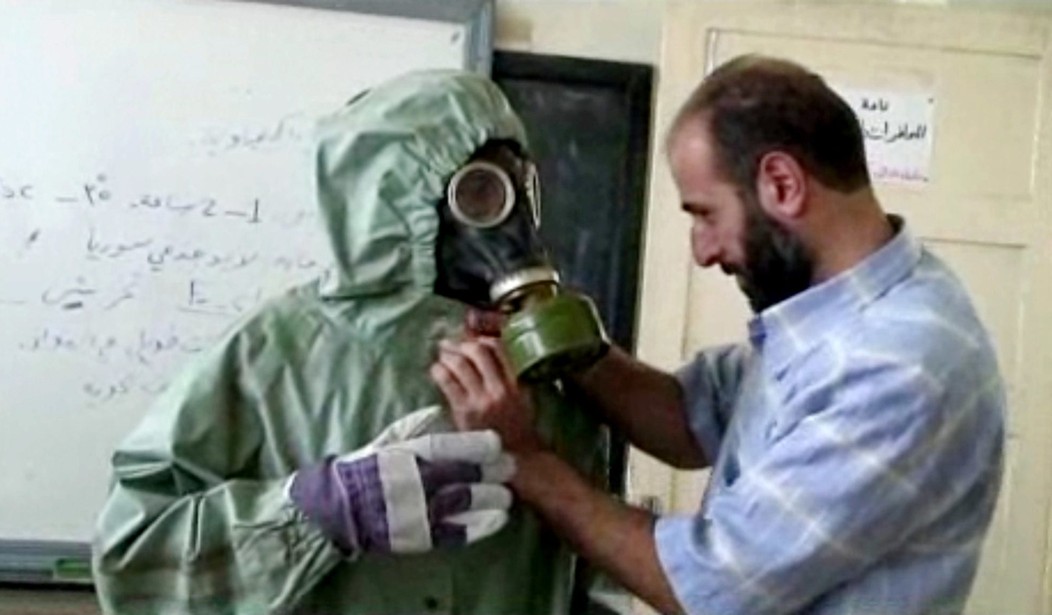A threat-monitoring firm in London tallied at least 52 incidents of chemical weapons use by the Islamic State since 2014 and warned of a high possibility that more could be unleashed as Mosul starts to fall.
IHS Markit’s Conflict Monitor said chemical weapons were used around ISIS’ largest occupied city in Iraq, currently under attack by Iraqi and Kurdish forces with U.S. support, at least 19 of those times.
Most of the threat is posed by chlorine and mustard agents, but analysts said ISIS could use a “dirty bomb” — radiological dispersion through a conventional explosive device.
“Medical and industrial sources of radioactive material are present within territory held by the Islamic State, for example, at the Hazim al-Hafid Hospital, a specialist in oncology and nuclear medicine facility in Mosul,” said Karl Dewey, a chemical, biological and radiological weapons analyst at IHS Jane’s.
ISIS acquired nearly 90 pounds of low-grade nuclear material from the University of Mosul soon after sacking the city in 2014, the company noted.
“Although the uranium compounds would only be of very limited utility for [radiological dispersal device] fabrication, comments made by Islamic State supporters suggest that members have at least thought about the idea,” Dewey said.
There has been a noted decline in chemical weapons use by ISIS in the run-up to the Mosul offensive, now in its sixth week.
But Columb Strack, senior analyst and leader of IHS Conflict Monitor, warned that as ISIS loses ground “there is a high risk of the group using chemical weapons to slow down and demoralize advancing enemy forces, and to potentially make an example of — and take revenge on — civilian dissidents within the city.”
Pentagon press secretary Peter Cook told reporters Tuesday that Iraqi forces “continue to make progress while exercising commendable care to avoid civilian casualties” as “they’ve been dealing, among other things, with vehicle-borne IEDs and the use of human shields by ISIL.” Defense officials have refused to say whether American advisers are in Mosul.
Strack noted that Mosul had been the home base for ISIS’ chemical weapons production, “but most of the equipment and experts were probably evacuated to Syria in the weeks and months leading up to the Mosul offensive, along with convoys of other senior members and their families.”
Asked about the report at Tuesday’s State Department briefing, press secretary John Kirby said he couldn’t “confirm the veracity” of the findings.
“What I can tell you, though, is that we have, ourselves, talked about our view that in the past Daesh has proven capable of trying to use chemical agents, whether it’s mustard and/or chlorine,” Kirby said. “And DoD has spoken to their view that they have at least attempted to do that in the past. So this is very much in keeping with a methodology we’ve seen out of these terrorists.”
The United Nations has also presented evidence of ISIS chemical weapons use. Kirby called the State Department’s refusal to confirm any ISIS chemical weapons usage yet an abundance of caution “because you don’t want to levy such a charge unless you know you’re 100 percent sure about it.”
“It’s not about reticence. I mean, clearly this is a group we’re not afraid to talk strongly about it and to act strongly against. I think it’s really about information and wanting to be careful,” he added. “But obviously, I mean, if they did, it would certainly be in keeping with their methodology. I think we’re just — we’re telling you what we think we know when we know it.”
The State Department’s travel alert for Europe issued Monday warned that “credible information indicates the Islamic State of Iraq and the Levant (ISIL or Da’esh), al-Qa’ida, and their affiliates continue to plan terrorist attacks in Europe, with a focus on the upcoming holiday season and associated events” and “terrorists may employ a wide variety of tactics, using both conventional and non-conventional weapons and targeting both official and private interests.”
Questioned on whether “non-conventional” meant chemical, biological and radiological weapons, Kirby said it wouldn’t “be wise for me to try to give you a laundry list of what conventional and non-conventional.”
“The main point that we were trying to convey to potential travelers is to be vigilant and to recognize that, especially during the holidays, at large public gatherings or in places where many visitors and tourists visit, attend, that they should stay informed and stay safe, and that terrorists have proven in the past – and we have to assume that they will prove capable in the future – of using a variety of means, lethal means, to hurt, kill, and damage innocent people and innocent property,” he said. “And that’s all we were trying to do.”
A study released this month by UK-based Conflict Armament Research uncovered a supply of guns used by al-Qaeda in West Africa attacks originating with ISIS in Syria, heightening concern that not only weapons but jihadists are utilizing pipelines across the Sahel.










Join the conversation as a VIP Member